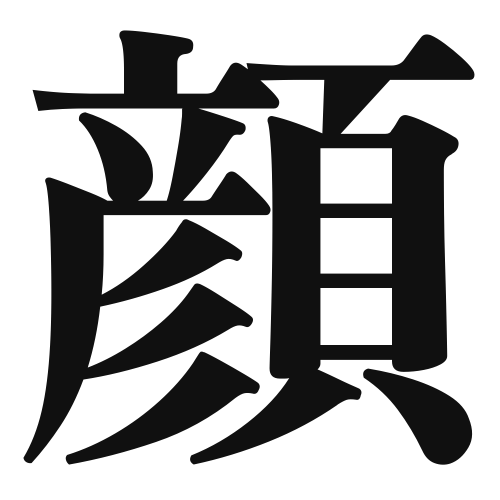1. Overview of Meaning
The kanji “顔” (kao) means “face.” It refers to the front part of a person’s head, where the eyes, nose, and mouth are located. In a broader sense, it can also represent one’s appearance or expression.
2. Formation and Radical
Formation of the Kanji: The kanji “顔” is a compound character, consisting of two parts: the radical “亻” (which indicates a person) and “顔” (which originally depicted a face). This character is classified as a compound ideograph (会意文字), as it combines elements to convey a specific meaning.
Radical: The radical for “顔” is “面” (men), which means “face” or “surface.” This radical is commonly found in other kanji related to the face or surface of objects.
3. Examples of Usage
Common Words and Phrases: Some frequently used words that include “顔” are:
- 顔色 (かおいろ, kaoiro) – complexion
- 顔立ち (かおだち, kaodachi) – facial features
- 顔面 (がんめん, ganmen) – face (medical term)
Example Sentences in Daily Conversation:
- 彼女はとても美しい顔をしています。 (かのじょはとてもびじんのかおをしています。) – She has a very beautiful face.
- 彼の顔色が悪いです。 (かれのかおいろがわるいです。) – His complexion looks bad.
4. Synonyms and Antonyms
Similar Kanji: A similar kanji is “面” (men), which also means “face” but can refer to the surface of objects or aspects of something. While “顔” specifically refers to a person’s face, “面” can be used in a broader context.
Opposite Kanji: An antonym could be “裏” (うら, ura), which means “back” or “reverse,” indicating the opposite side of the face.
5. Cultural and Historical Background
Relation to Japanese Culture: In Japanese culture, the face is often associated with emotions and social interactions. The expression on one’s face can convey a lot about their feelings and intentions.
Proverbs and Idioms: One common idiom is “顔を立てる” (かおをたてる, kao o tateru), which means “to save face” or “to maintain one’s dignity.” This reflects the importance of reputation and social standing in Japanese society.
